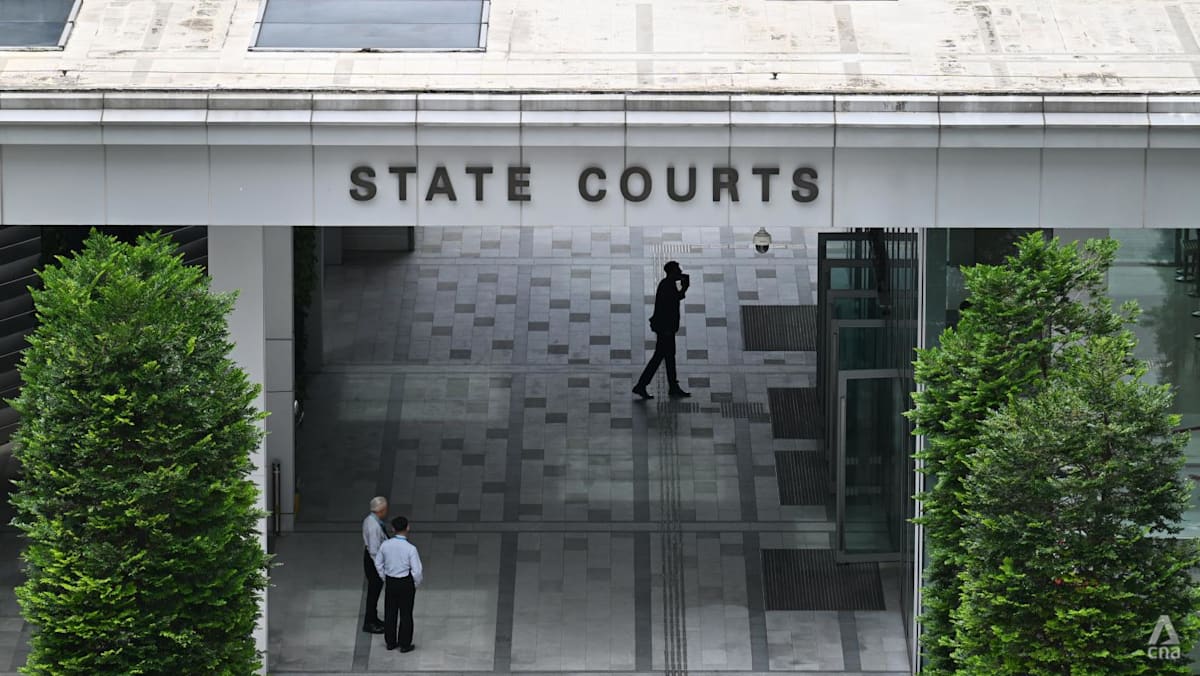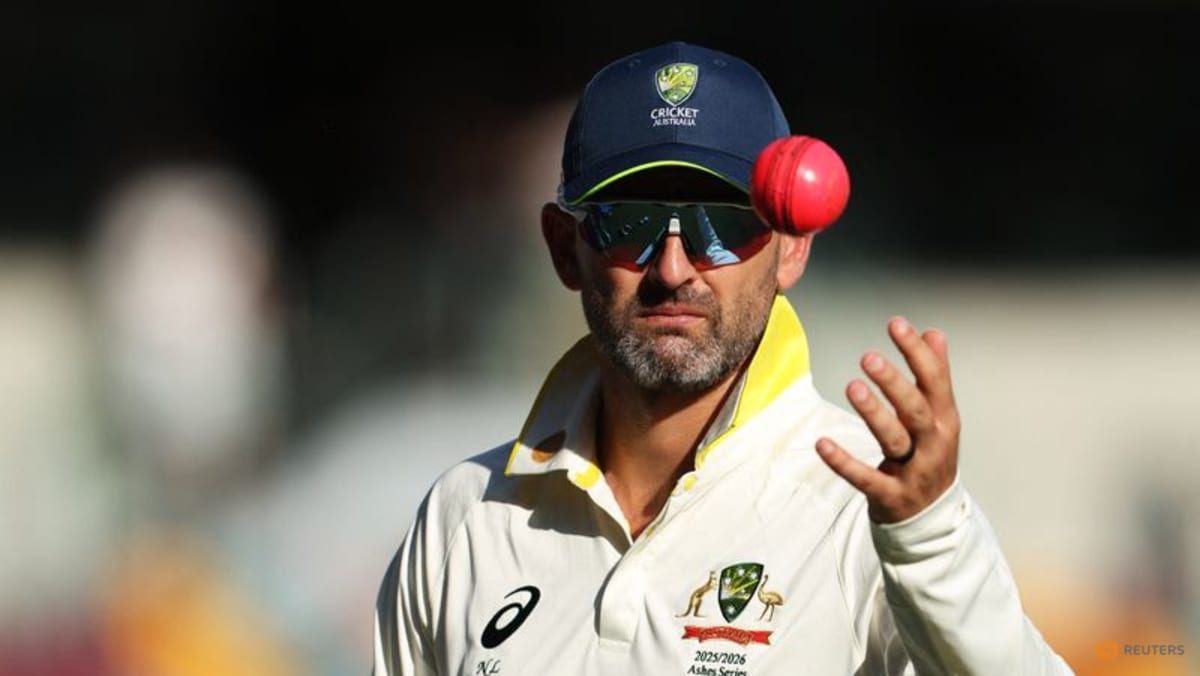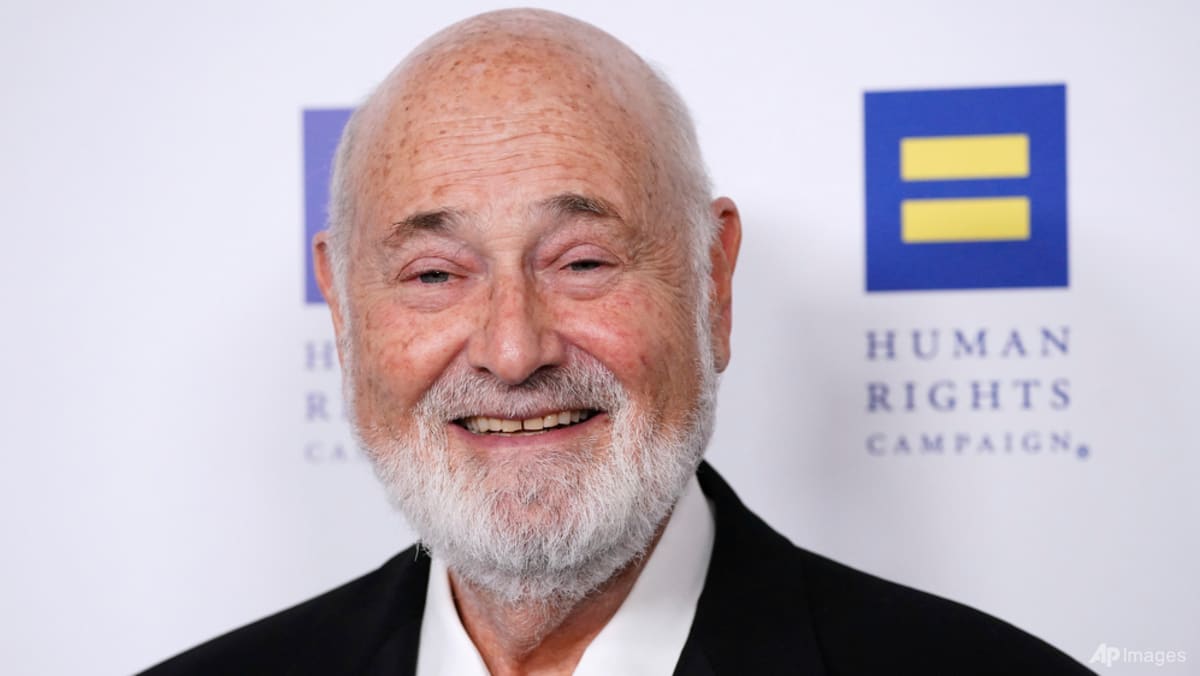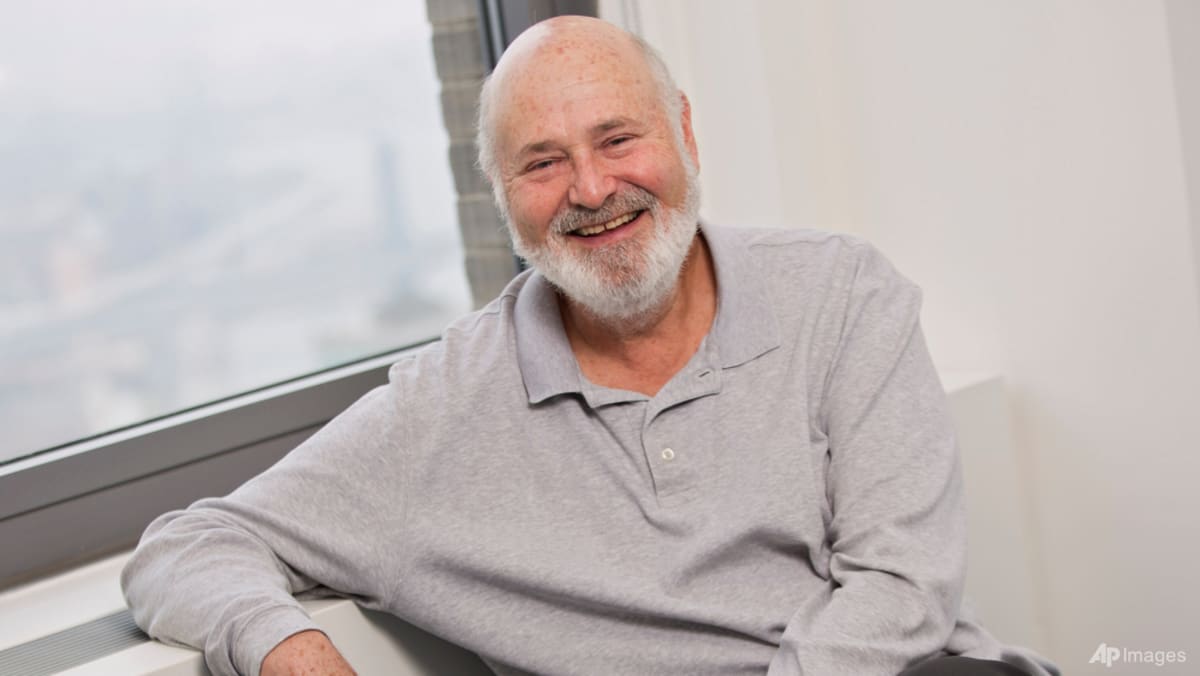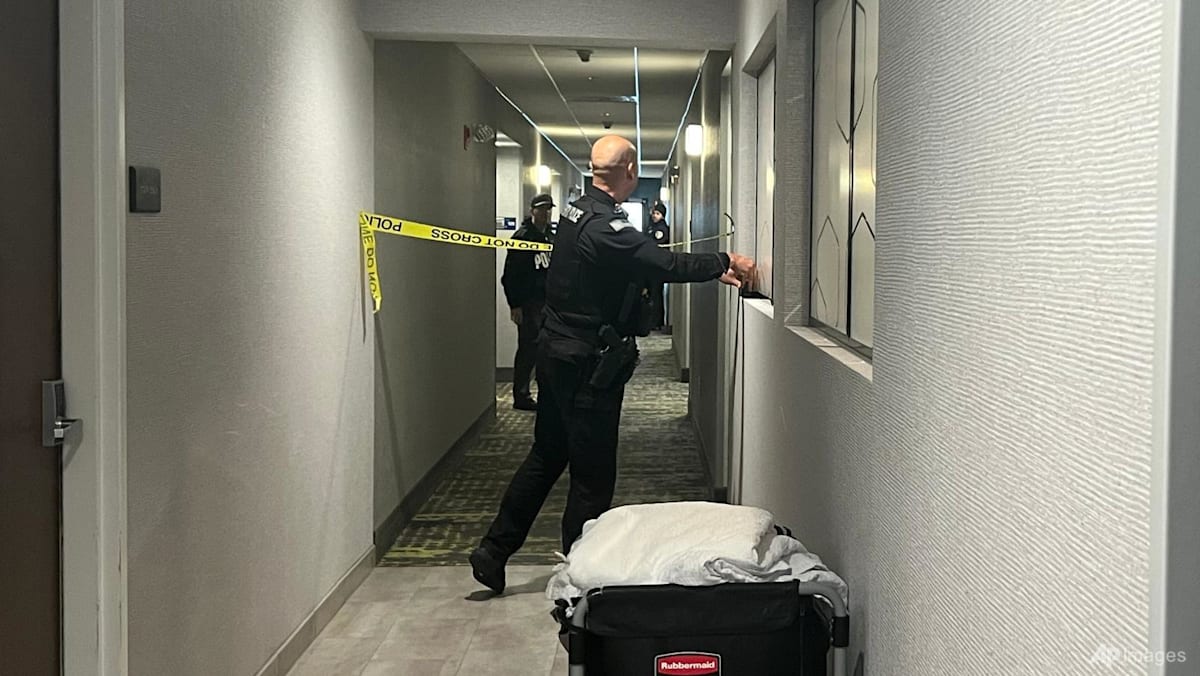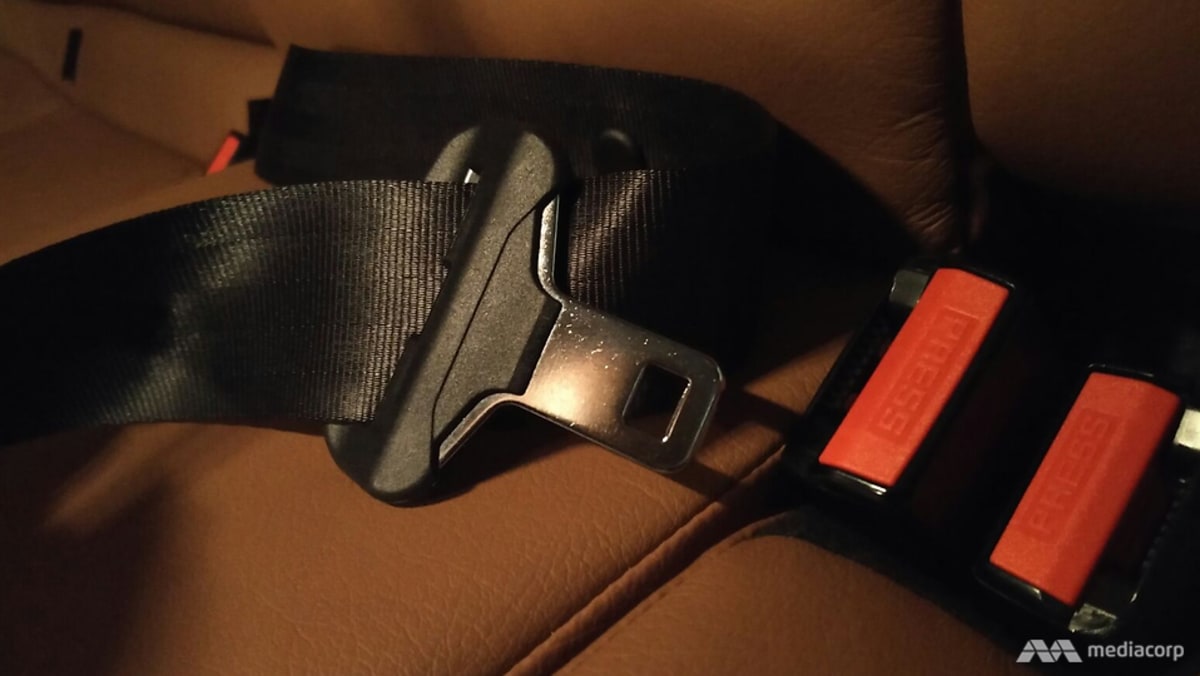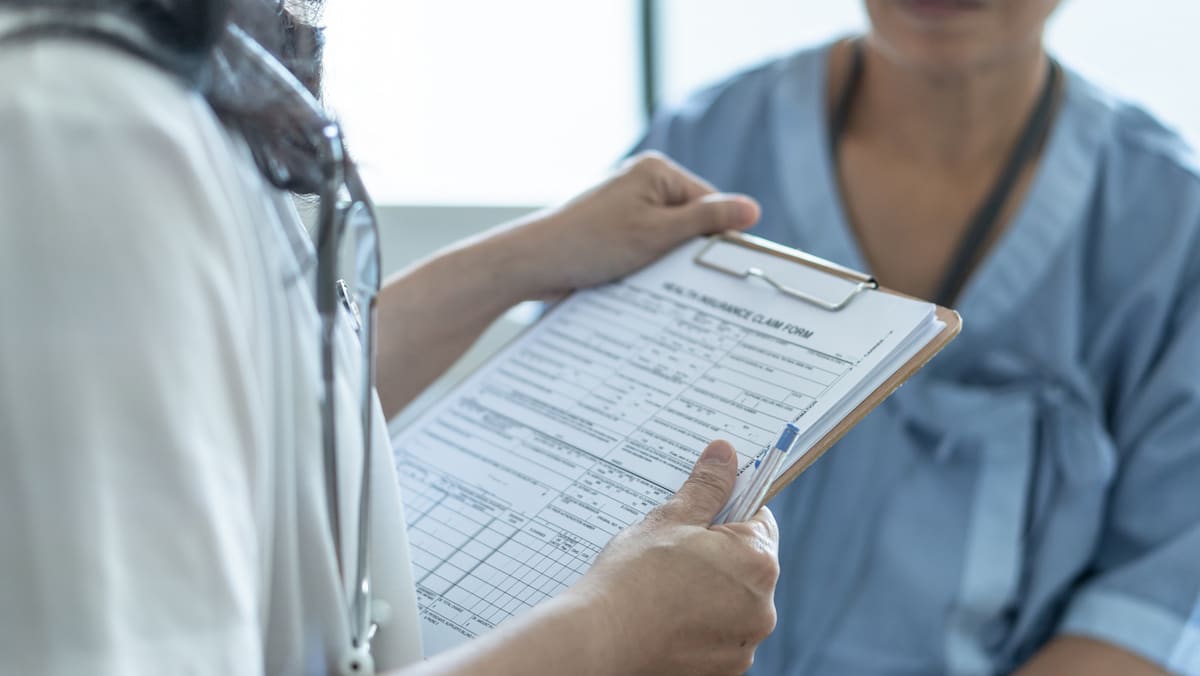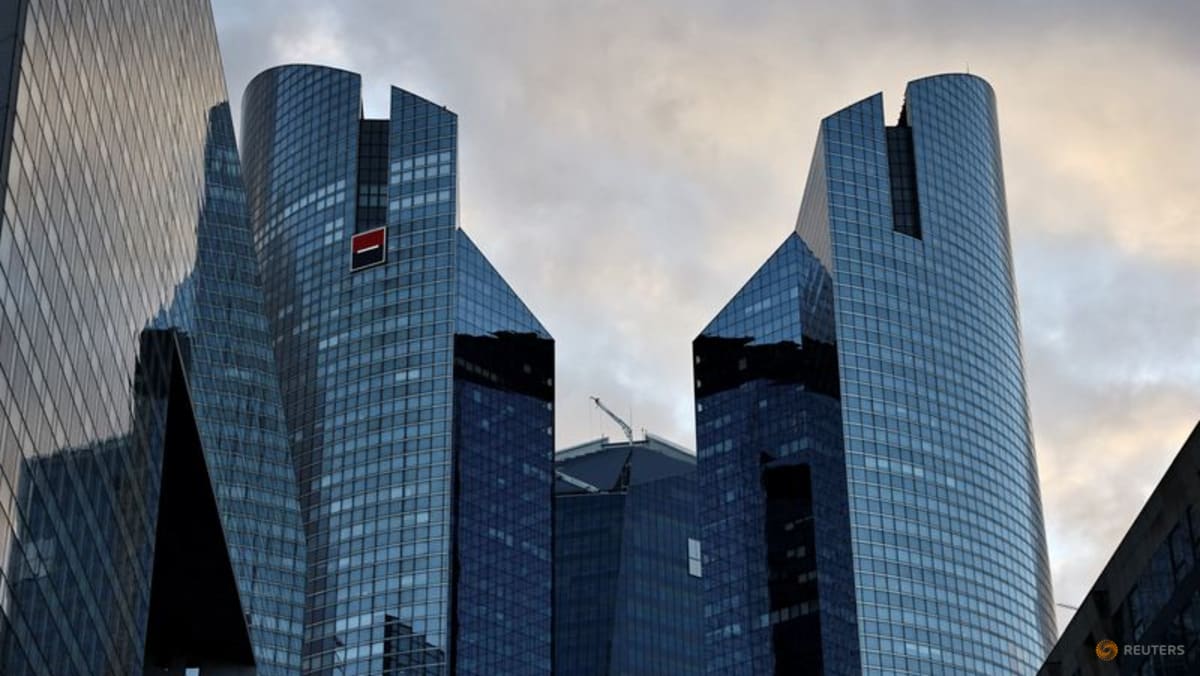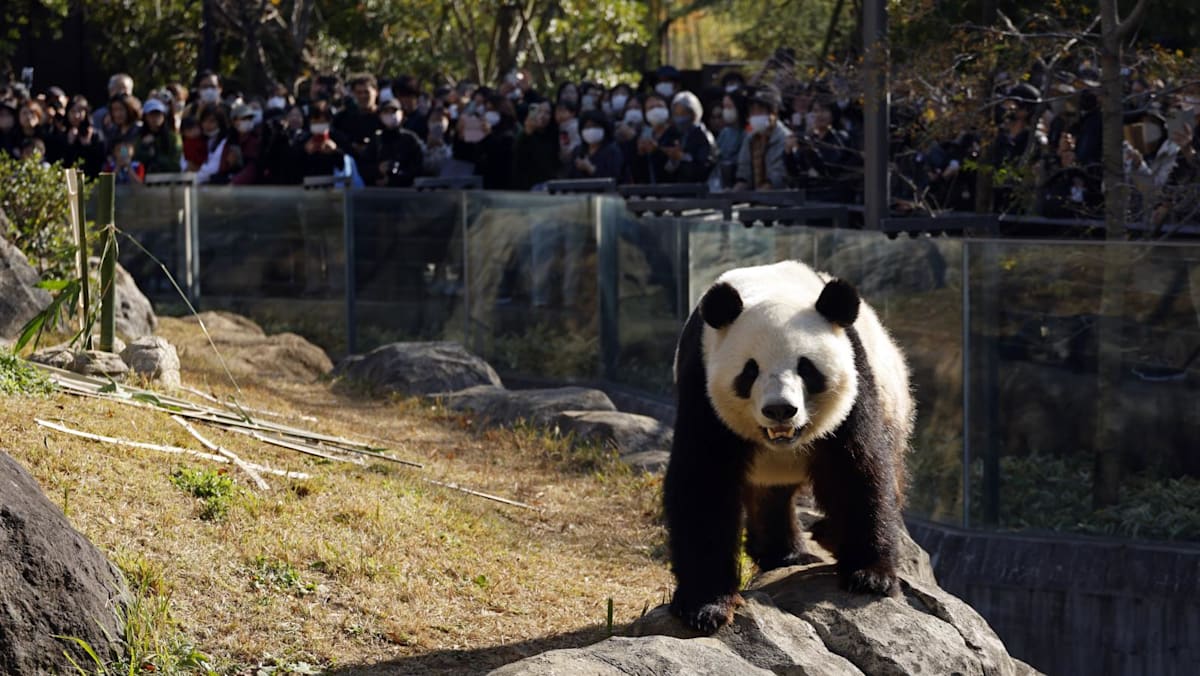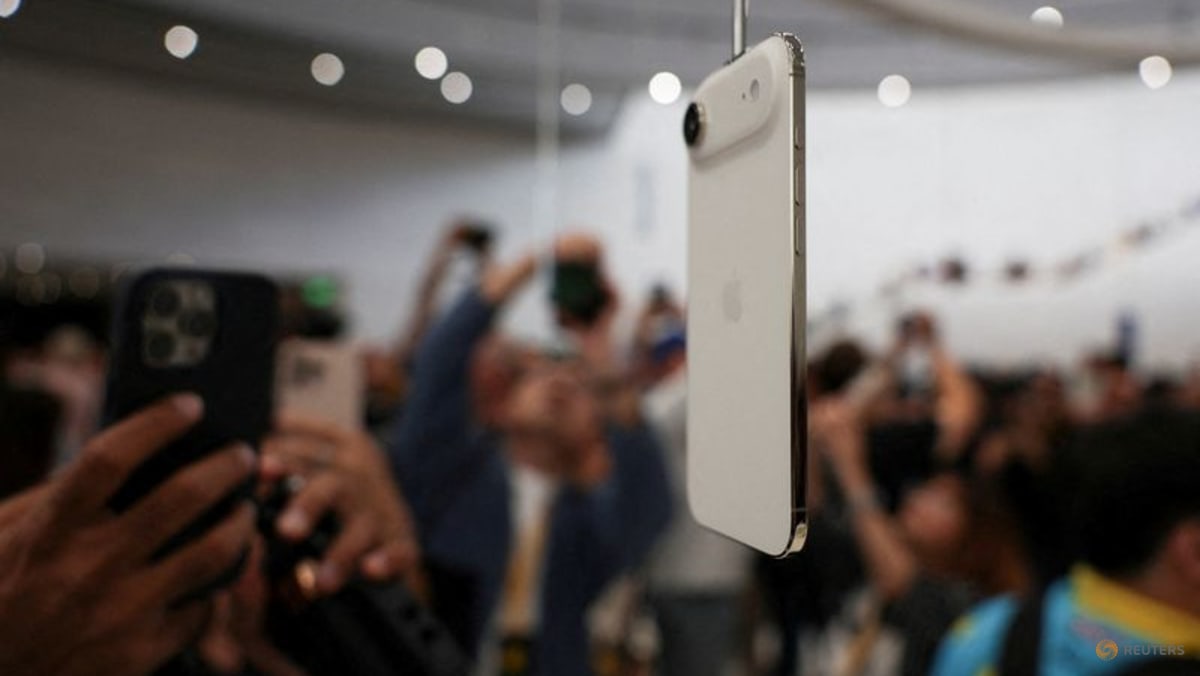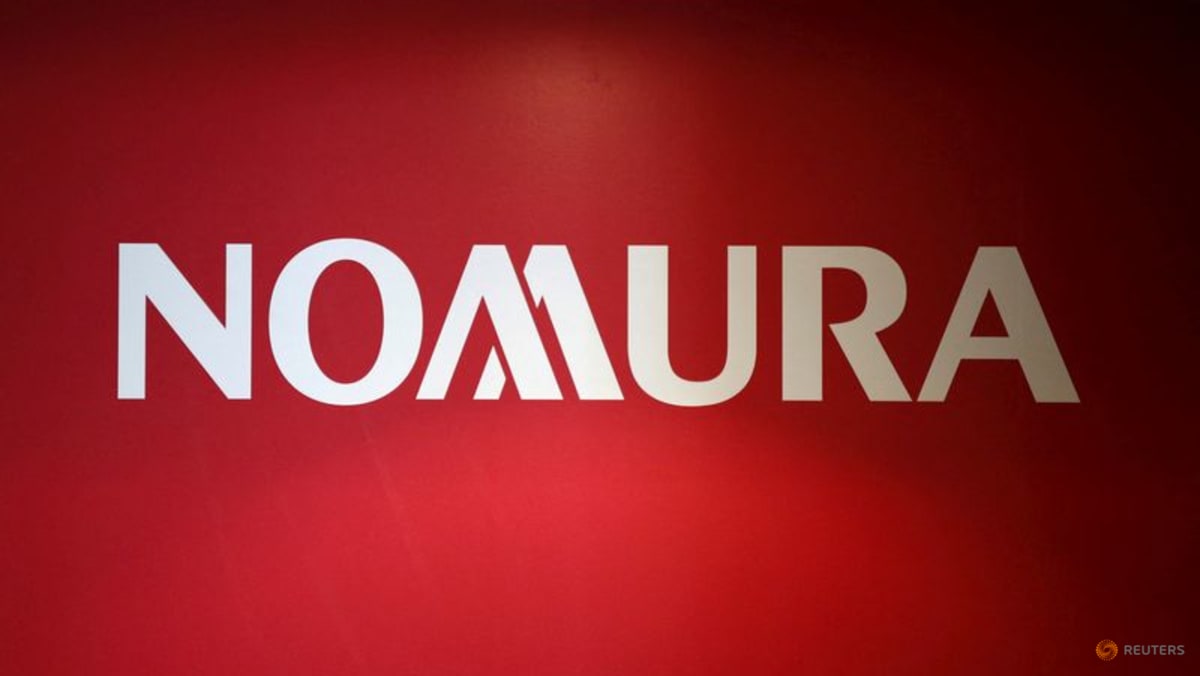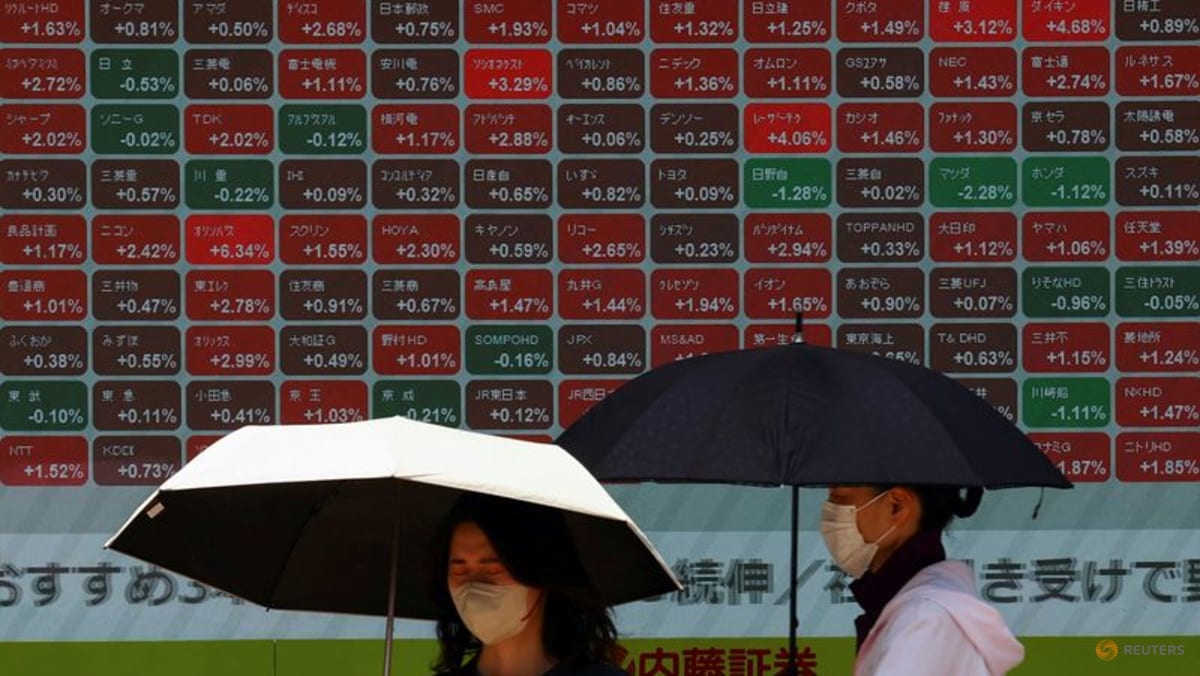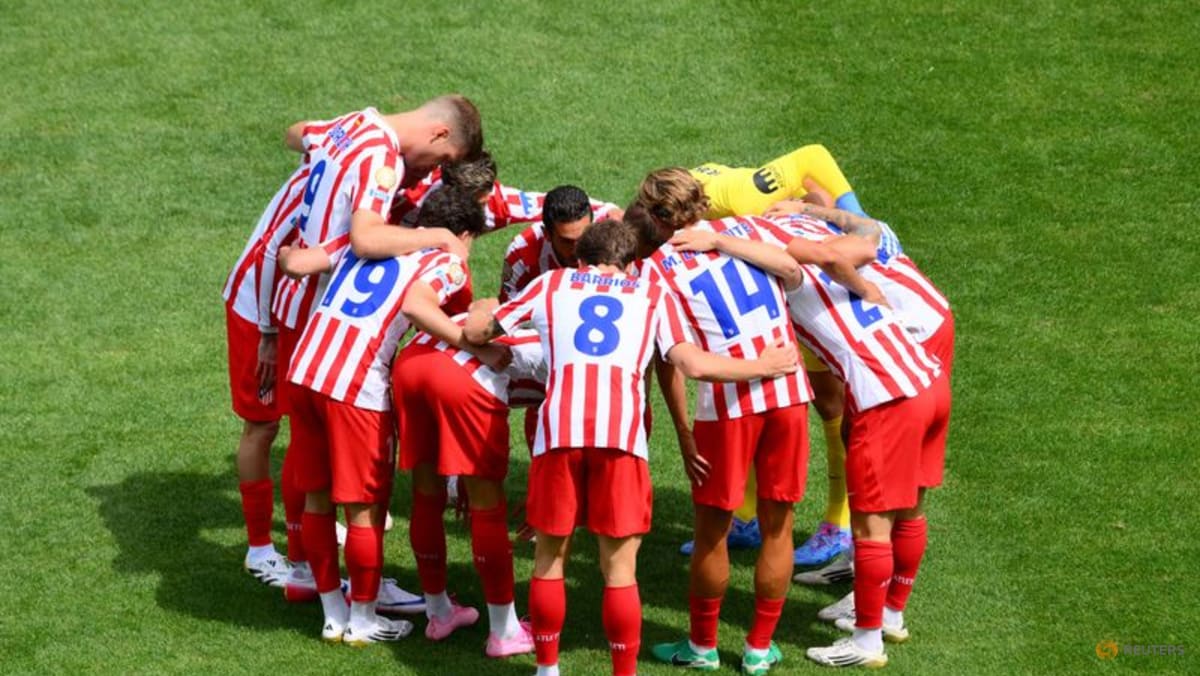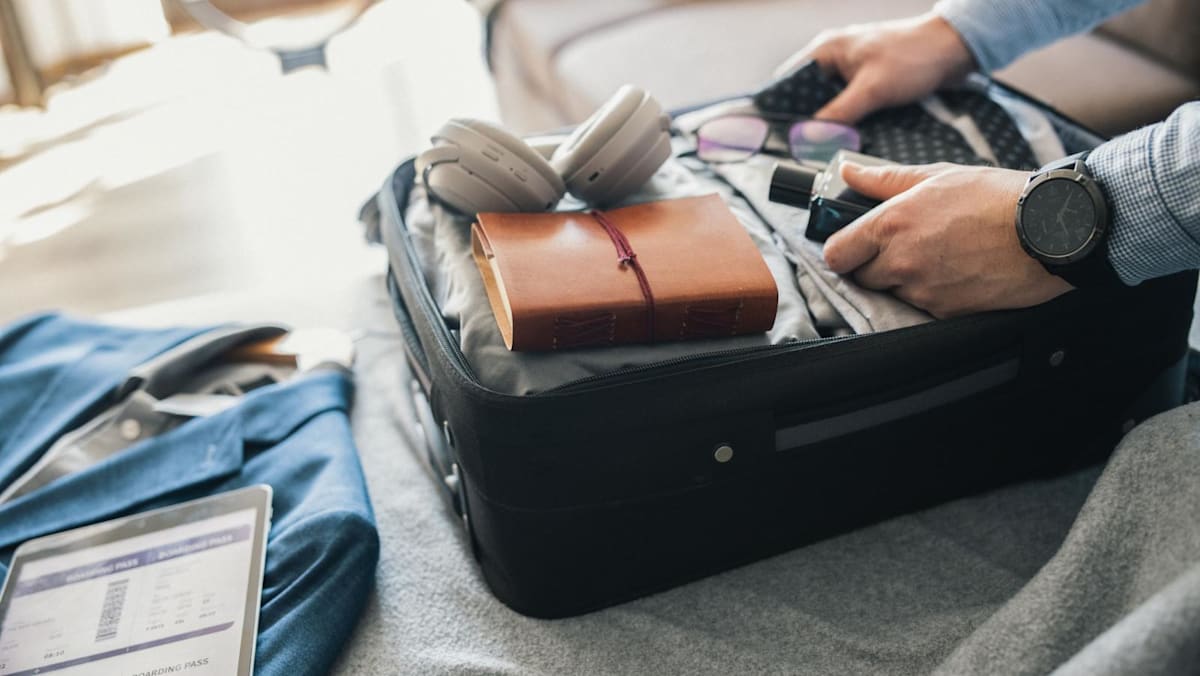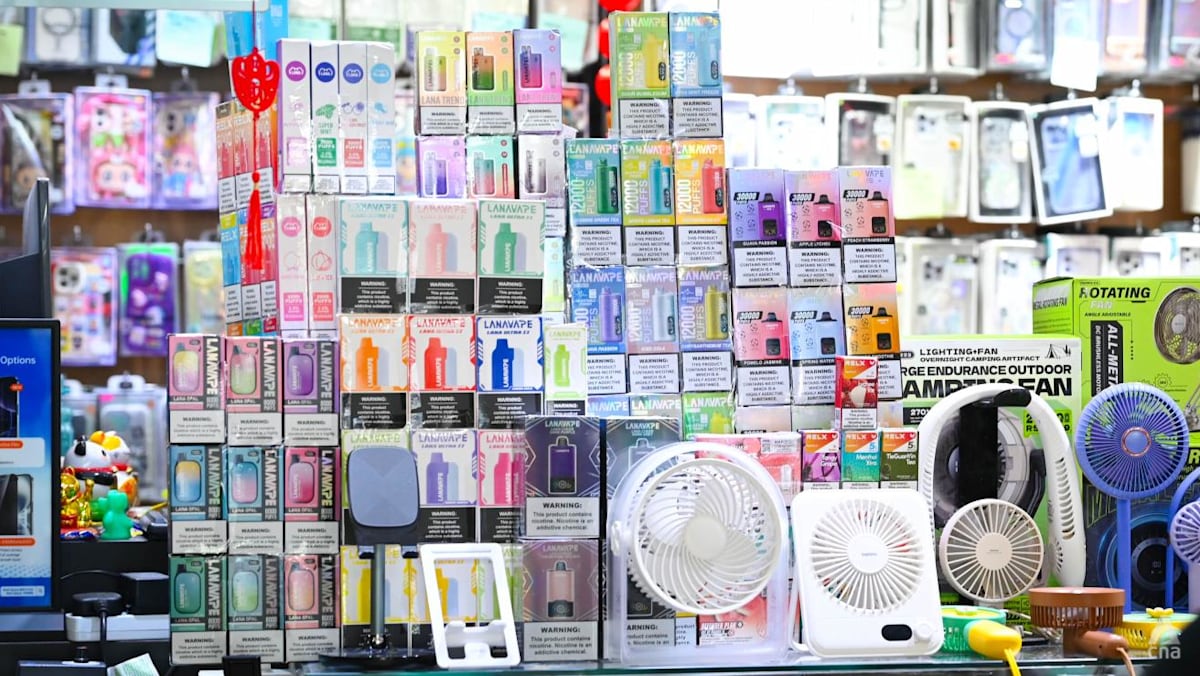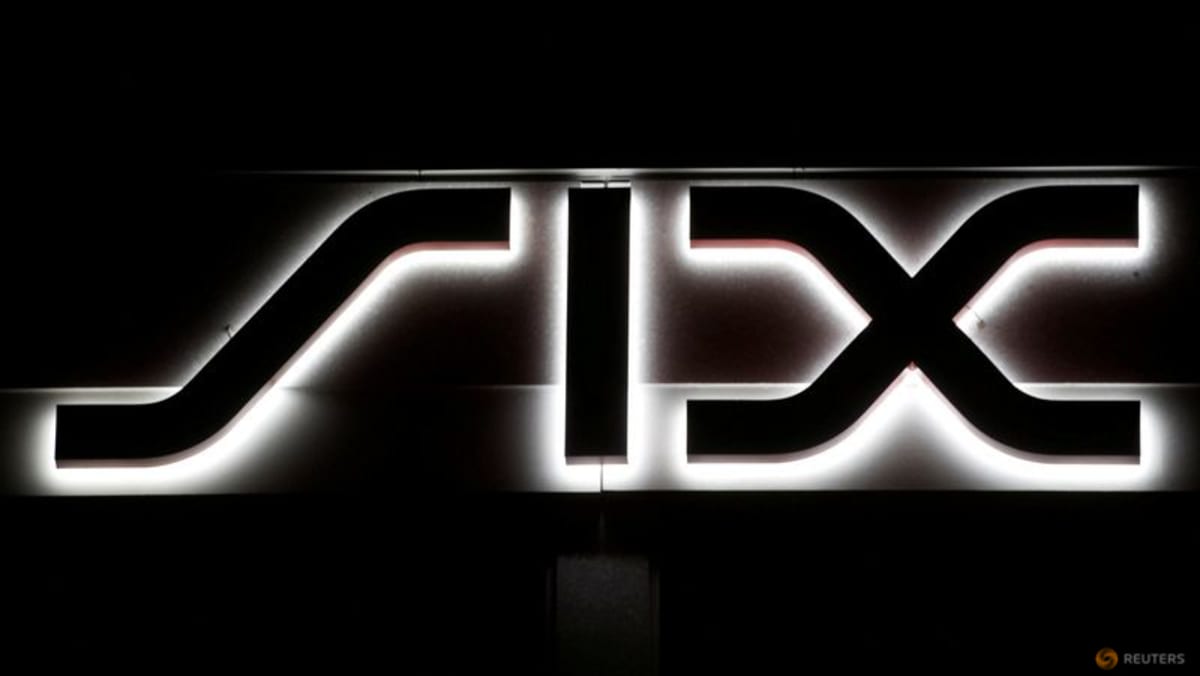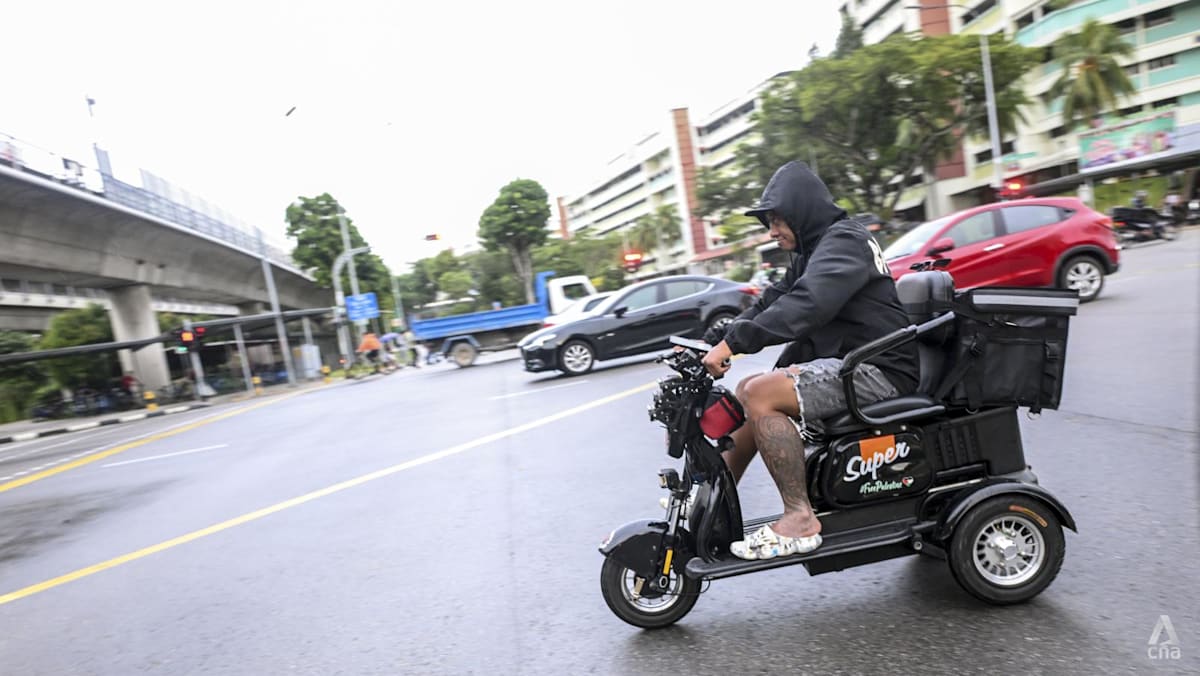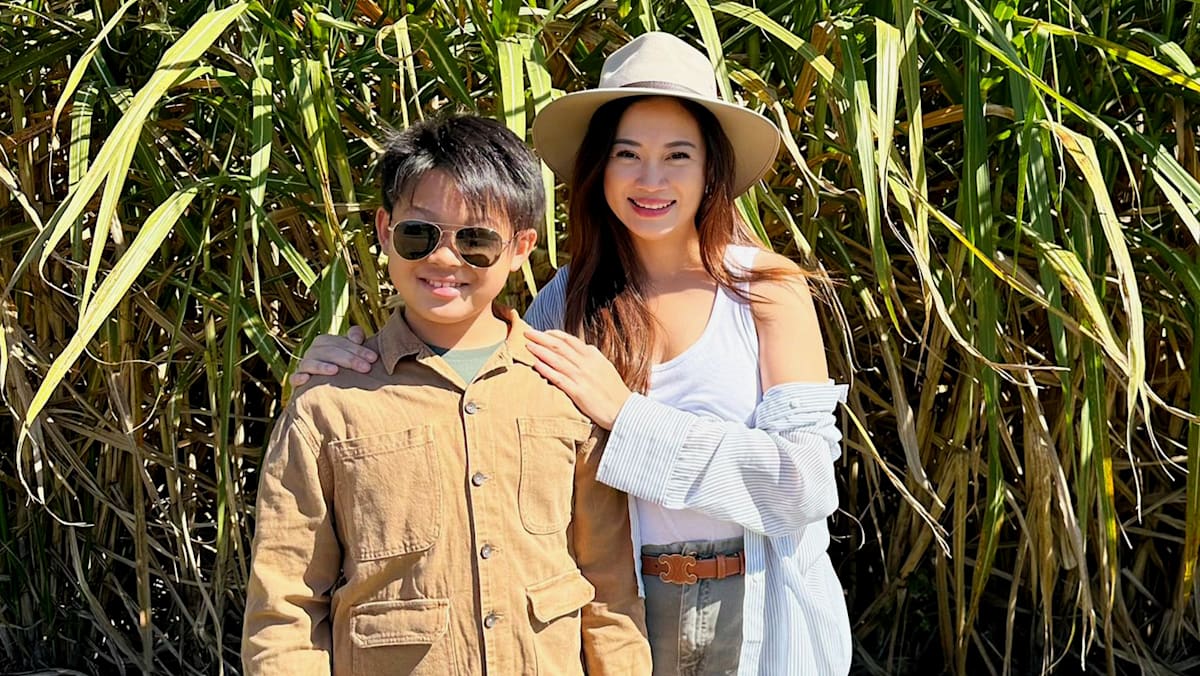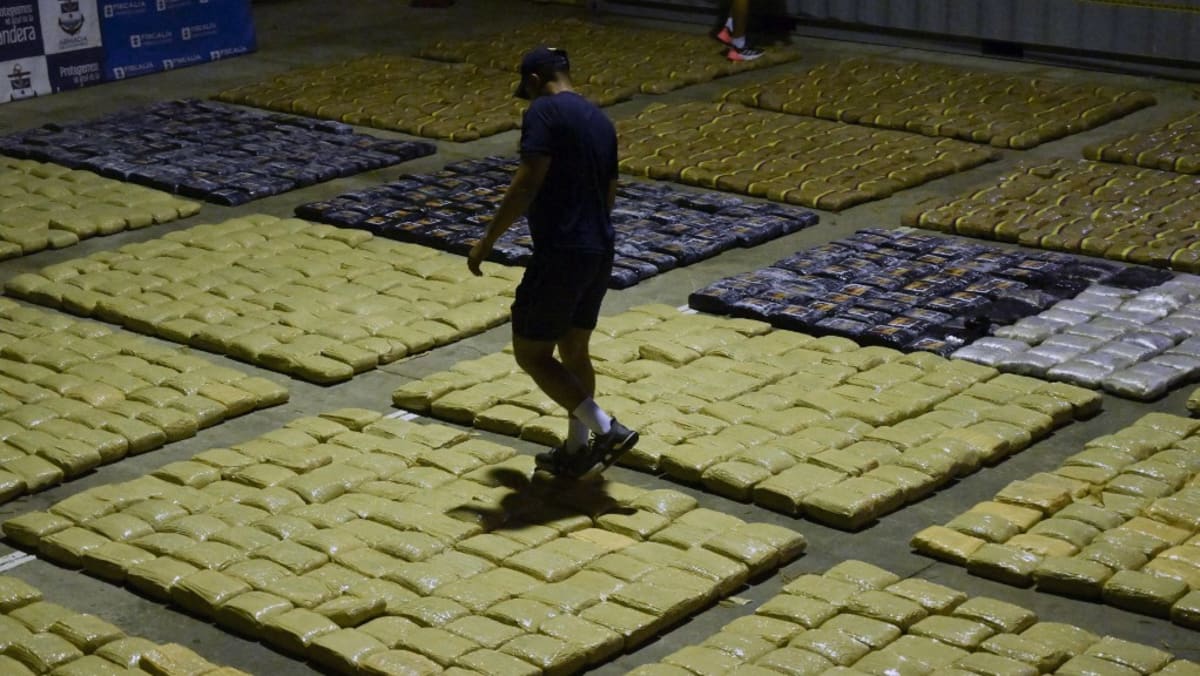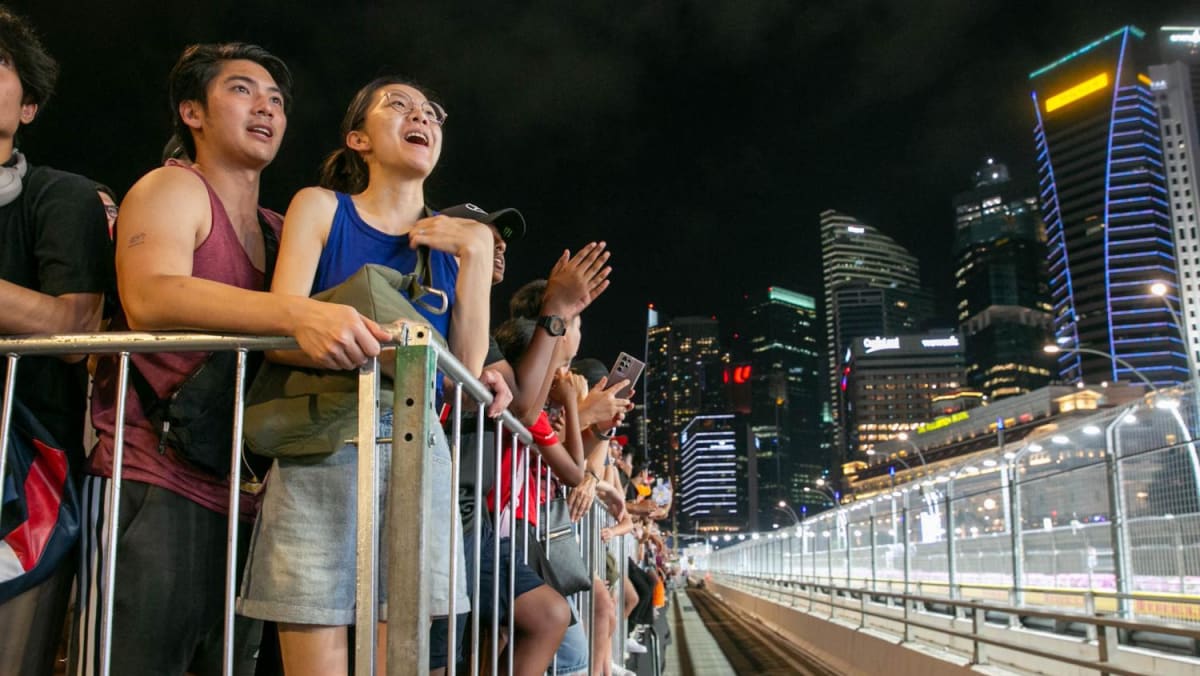Inextricably tied to the D-Day invasion of World War II, this northern French region of orchards, dairies, horse farms and seaside villages along the English Channel draws visitors who come to honour the fallen or visit famous medieval fortresses and abbeys. Others indulge in rich cheeses, celebrated beef and top-flight oysters. Spending a night each in the towns of Caen and Deauville offers the full Normandy immersion and is a fine precursor to other regional highlights, like the high cliffs of Etretat and the grand cathedral of Rouen. To celebrate its 1,000th birthday, the university town of Caen, home to France’s finest World War II museum, has renovated its medieval castle (built by William the Conqueror) and organised events and public installations from Olafur Eliasson and other contemporary artists. Around 40 miles away, beachfront Deauville — a purpose-built, 19th-century leisure haven — hosts the annual Deauville American Film Festival in early September.
FRIDAY
5pm | Take a history lesson
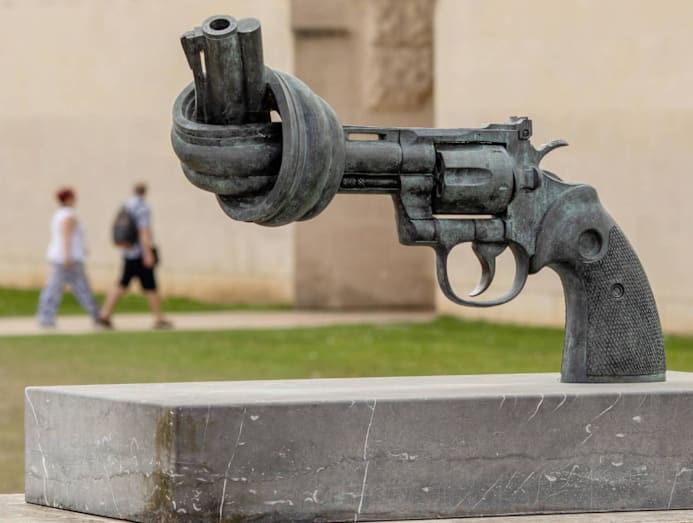 Memorial de Caen. (Photo: Camille McOuat/The New York Times)
Memorial de Caen. (Photo: Camille McOuat/The New York Times)
For many, Normandy is synonymous with World War II, the place where the Allied forces launched the D-Day invasion, the pivotal battle that began the liberation of Europe. A primer on Normandy’s wartime history and its terrible human cost can be found inside the Memorial de Caen museum, located on the town’s outskirts, less than 10 miles from Sword Beach, one of the landing zones for Allied soldiers on Jun 6, 1944, aka D-Day. Maps, photographs, military material and a harrowing film retrace the months of bloody struggle as American, British, Canadian and other soldiers fought to retake Caen and northern France from Nazi occupation during the Battle of Normandy. Tickets €25.80, or about US$30.
8pm | Dine with Olivier, Steve and Jean-Michel
With a Michelin-starred restaurant already on his resume, the chef Olivier Barbarin in 2022 opened the retro-cool Magma, located on the west side of Caen’s historic core, just behind the city’s neo-classical former courthouse. Inside, colourful portraits of the actor Steve McQueen and the artist Jean-Michel Basquiat adorn the walls, and an ’80s soundtrack (Peter Gabriel, Simply Red, the Pretenders) provides a quiet rock background. The menu changes every other day. Recent winning dishes have included melon strips and raw tuna in a tangy sauce made with anise-flavoured liqueur; thin-sliced steak from the Caen area; and a dessert of Camembert — Normandy’s signature cheese — cooked on top until slightly caramelised and crisp. Set menu only; five courses for €58; seven for €79.
10pm | Try a Norman nightcap
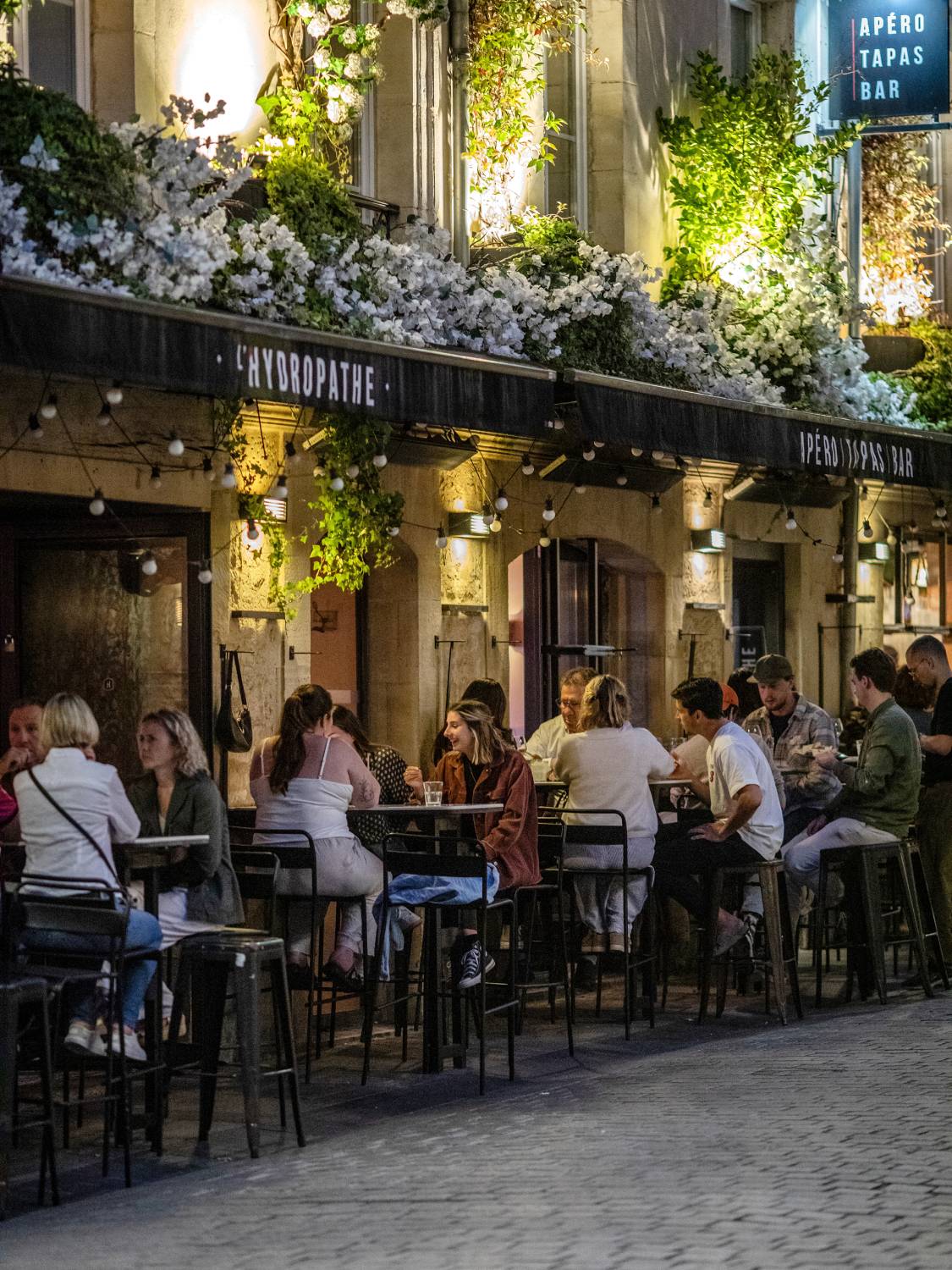 L’Hydropathe. (Photo: Camille McOuat/The New York Times)
L’Hydropathe. (Photo: Camille McOuat/The New York Times)
On rue St. Laurent, L’Hydropathe offers a quiet, classy alternative to the loud strip of bars on rue Ecuyere where students gather en masse. The bar sprawls over two buildings that face each other across the street, including a greenhouse-like annex that abounds in French wine and spirits. Try Bellevoye Vert (€13.50), a French whiskey aged in barrels for Calvados, Normandy’s apple brandy. Several minutes away in a tranquil square, Boumbap is an indoor-outdoor restaurant-bar with low lighting, mirrored walls and a vinyl collection. Normandy’s Spore brewery provides the beers, including a refreshing pilsner (€3.60 per glass).
SATURDAY
9.30am | Storm the castle
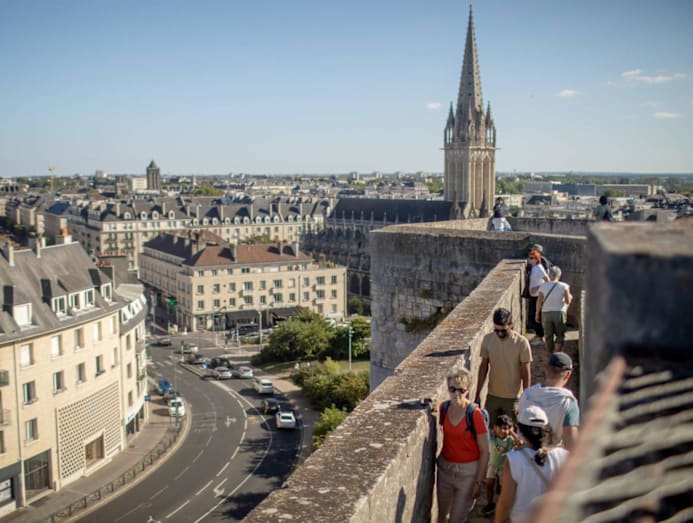 Chateau de Caen. (Photo: Camille McOuat/The New York Times)
Chateau de Caen. (Photo: Camille McOuat/The New York Times)
Revive with espresso (€1.90) and banana bread (€4) amid the hanging plants of Arbuste, a small coffee shop and roastery with beans from around the world. Then cross the street to the Chateau de Caen (free admission), the castle built by William the Conqueror around 1060, six years before he invaded England and ruled for two decades as its king. The ramparts offer commanding views of Caen’s skyline, while the grounds contain medieval edifices, a 1902 statue by Auguste Rodin and Caen’s main art museum, the Musee des Beaux-Arts (open at 11am). The collection is awash in top Renaissance Italian and Flemish artists — Perugino, Veronese, Tintoretto, Van der Weyden, Brueghel the Younger — and houses a Normandy masterpiece: A luminous 1885 Monet seascape of the cliffs of Etretat. Museum admission €7.
11.30am | Go to church
One thigh bone. That’s what remains of William the Conqueror, and it is buried within the (free) Eglise St. Etienne, a soaring church built from the 11th to the 17th centuries. Next door, medieval history and modern art merge at the Abbaye aux Hommes (€6 admission), whose construction also began during William’s reign. Until Sep 28, its former scriptorium (where monks once wrote and copied texts) is showing artworks from the Fondation Gandur Pour l’Art, a major private collection that will open a museum in Caen in the coming years. The impressive exhibition ranges from Greek vases to Renaissance clocks to abstract canvases by Pierre Soulages and Basquiat.
1.30pm | Relish a low-cost lunch
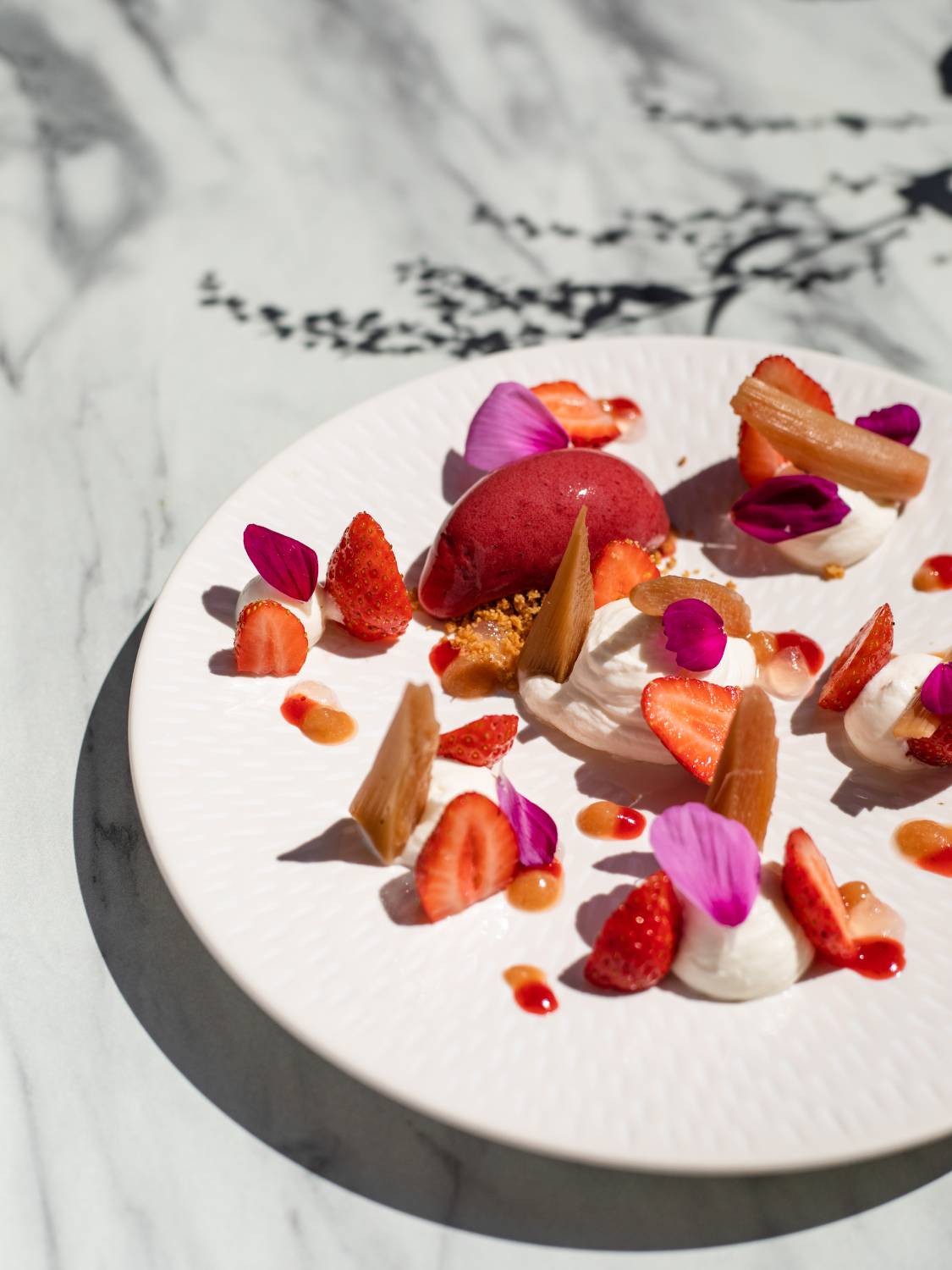 Augia. (Photo: Camille McOuat/The New York Times)
Augia. (Photo: Camille McOuat/The New York Times)
At dinnertime, €25 barely covers a single main course at Augia, a year-old restaurant that sources its steak (€27), chicken (€24) and much of its other produce from Normandy and the Caen area. At midday, however, the chef Gregoire James serves a €25 three-course lunch for the cognoscenti seated among the stone walls, exposed wooden beams and plank floors. A recent menu featured salmon sashimi with red roe and whipped regional goat cheese followed by warm fillets of Atlantic mackerel atop fluffy couscous — a tasty Norman-North African mashup. A bottle of Normandy apple cider (€7) completes the meal nicely.
4pm | Take the bus to the boardwalk
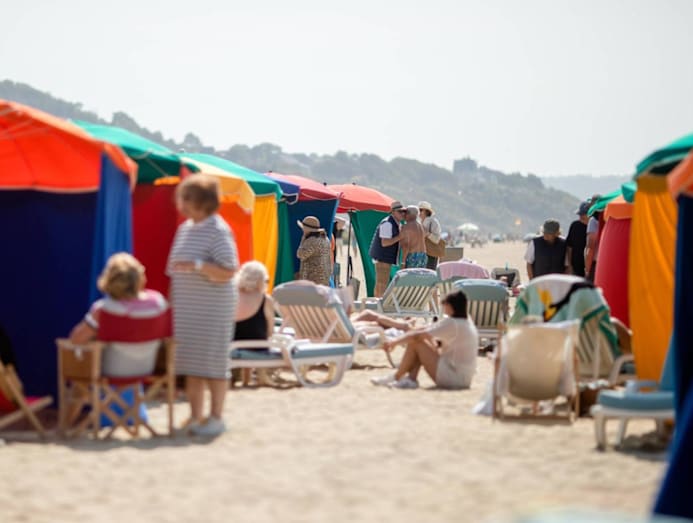 The colourful umbrellas that fill the Deauville beach’s golden sands. (Photo: Camille McOuat/The New York Times)
The colourful umbrellas that fill the Deauville beach’s golden sands. (Photo: Camille McOuat/The New York Times)
If you’re not driving: From Caen station, take the train or bus to Deauville (1.5 to two hours, one way) to catch the late-afternoon rays on les Planches, the town’s beachside boardwalk. Walking westward from the port, you’ll pass a long row of Art Deco bathhouses, each adorned with the name of a movie star who has attended the Deauville American Film Festival — Salma Hayek, Stanley Tucci, Morgan Freeman and scores more — and then the much-photographed forests of colourful umbrellas that fill the beach’s golden sands. For a sunset drink, consider a French 75 (gin, lemon juice, sugar syrup, Champagne; €17) at the open-air Bar de la Mer.
8pm | Dine on the coast
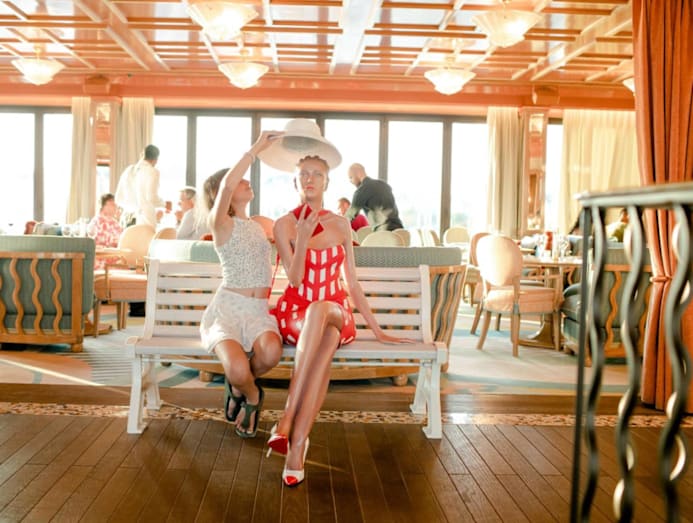 Le Deauville, a new restaurant, has upped the fun in the town of Deauville with its self-consciously nautical-kitsch design and DJ-fuelled pre-party atmosphere. (Photo: Camille McOuat/The New York Times)
Le Deauville, a new restaurant, has upped the fun in the town of Deauville with its self-consciously nautical-kitsch design and DJ-fuelled pre-party atmosphere. (Photo: Camille McOuat/The New York Times)
Under ceiling lamps shaped like seashells, black-clad waitstaff cut ninja-like silhouettes against the swirling peach, seafoam-green and ocean-blue decor of Le Deauville, while tunes by Frank Sinatra, doo-wop groups and the Beatles fill the air. The dining room’s glass walls look onto sailboats bobbing in the marina as the sun sets over the Atlantic. Inside, diners in white linen and retro-reissue sneakers clink glasses of Minuty rose (€15) before diving into sea bass ceviche (€17) and chicken breast served with baked slices of Normandy apples (€26). Opened two years ago by the Costes family — longtime Paris hospitality impresarios known for the Hotel Costes and Le Cafe Marly — Le Deauville has upped the town’s style and fun quotients with its self-consciously nautical-kitsch design and DJ-fuelled pre-party atmosphere.
10.30pm | Join the singalong
If you don’t know the words to French nightclub classics like Mourir Sur Scene and Paris Latino, learn them now: You’ll be singing them by night’s end on the improvised dancefloor between the low tables and velvety blue chairs at L’Equilibriste. Outfitted with patterned carpets, potted plants and flickering candles, this plush cocktail bar has sprouted in recent years and further raised Deauville’s fun factor, thanks to its tasteful interior design, corner DJ, and boozy drinks like the eponymous L’Equilibriste (€16), a mix of Calvados, Chartreuse, Laphroaig Scotch, Connemara whiskey, Punt e Mes vermouth and maple syrup.
WHERE TO STAY
- Next to Deauville, in Benerville-sur-Mer, Maison Douce Epoque is a brand-new luxury hotel in a 19th-century mansion. In addition to 14 rooms and suites, the hotel contains a spa and restaurant. Rooms from €349, or about US$407.
- You Are Deauville is a sleek modern 52-room hotel containing a cafe, shared kitchen, cinema room and lobby coworking space. Rooms in September from €137.
- For convenience and affordability, the People Caen is a solid bet. The combination hotel and hostel contains around 210 beds spread across some 60 rooms, as well as a restaurant, bar and rooftop lounge. Tram line 2 stops outside the building, which is 12 minutes on foot from the train station. Rooms from €69.
- The historic center of Caen has numerous short-term apartment rentals, many of them for under €120 per night. In Deauville, rental units are clustered around the port and Place Morny, the town’s lively commercial center. Expect to pay €160 and up per night.
Collapse Expand
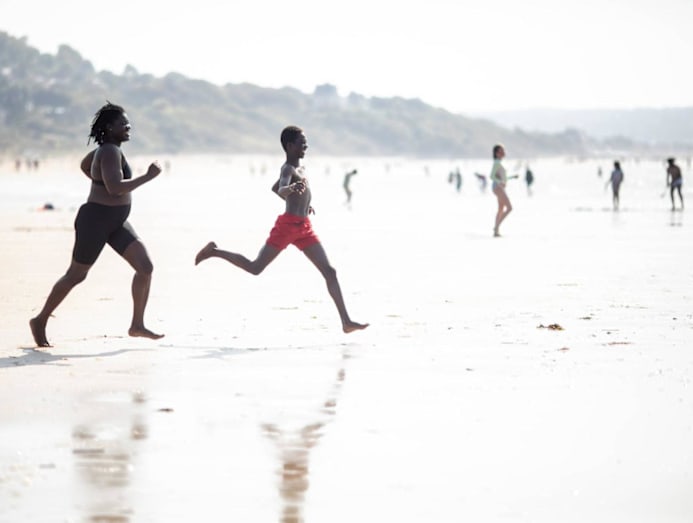 Running toward the water at Deauville Beach. (Photo: Camille McOuat/The New York Times)
Running toward the water at Deauville Beach. (Photo: Camille McOuat/The New York Times)
SUNDAY
10.30am | Browse art and books in a former convent
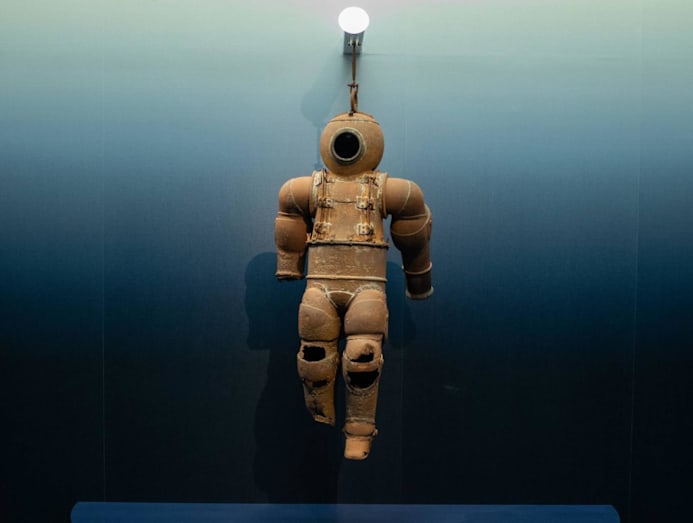 Les Franciscaines. (Photo: Camille McOuat/The New York Times)
Les Franciscaines. (Photo: Camille McOuat/The New York Times)
Where can you attend an art exhibit, read the works of Flaubert, buy Monet-themed socks, watch Francois Truffaut films in a red mini cinema, and get a cappuccino (€5) and a madeleine cake? Les Franciscaines awaits you about 15 minutes on foot from the town centre. A 19th-century convent converted into a sleek, modern cultural and gastronomic venue, the sprawling brick structure encompasses a library, magazine reading-room, book-lined restaurant, gift shop, multimedia centre and exhibition spaces, one of which is showing Bleu Profond (Deep Blue) until Sep 21. (Admission €13.) Taking the sea as its theme, the exhibition features artworks — a tapestry designed by Gustave Moreau, a coral sculpture by Yves Klein, a shell-encrusted Mickey Mouse statue from Damien Hirst — along with old sepia photos, 19th-century illustrations, and pioneering films of the underwater world.
12.30pm | Shop for souvenirs and shellfish
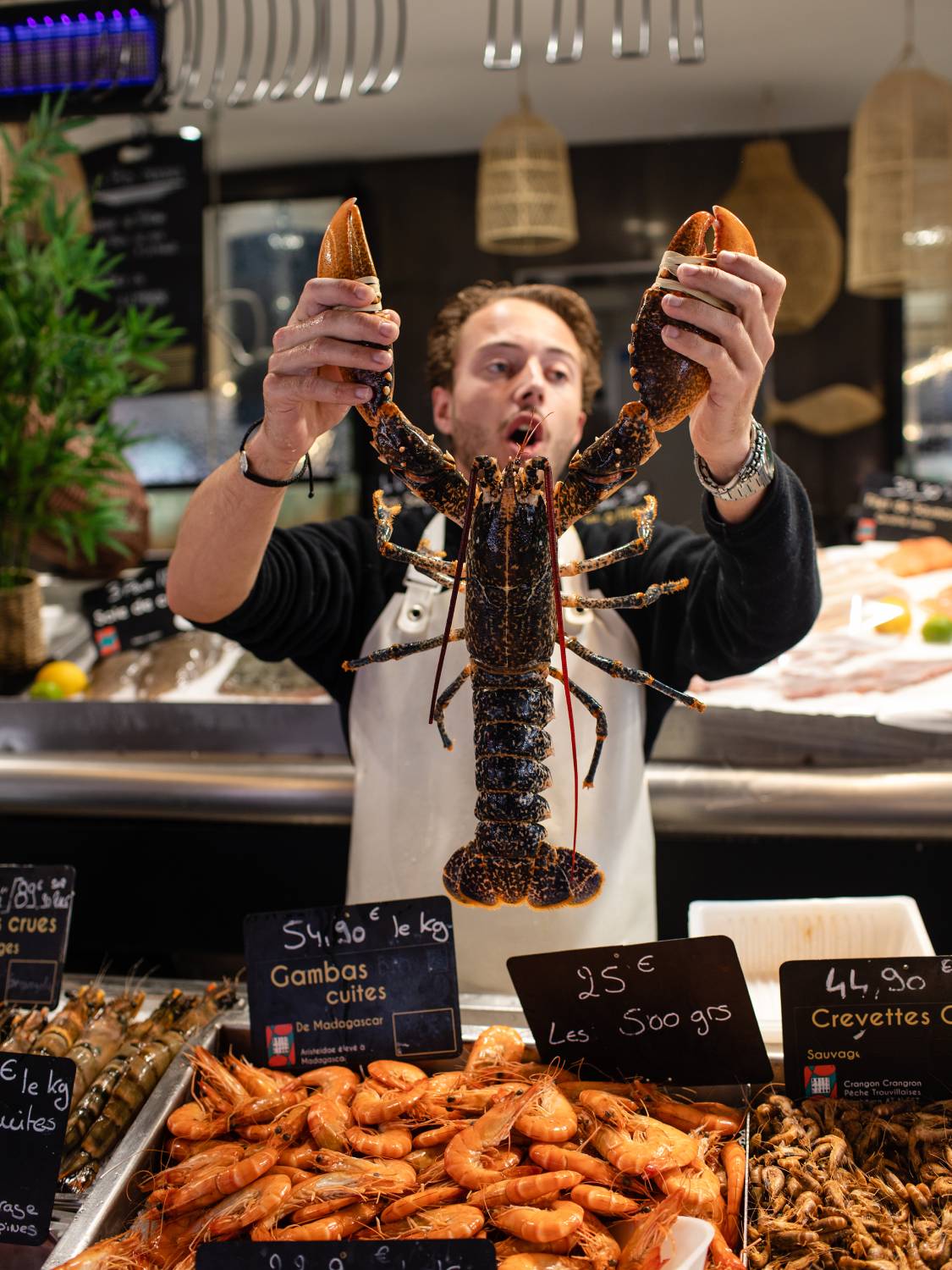 Halle aux Poissons. (Photo: Camille McOuat/The New York Times)
Halle aux Poissons. (Photo: Camille McOuat/The New York Times)
Cross the Pont des Belges bridge (on foot or by car) to reach the town of Trouville-sur-Mer, the laid-back, bohemian sibling to the more upscale Deauville. At the town’s outdoor Sunday market, an old-timey carousel pokes above a sea of stands selling prepared foods, regional produce and nautical-themed crafts. De L’O a la Lumiere creates lamps (€100 to €150) from coastal detritus like driftwood and ropes, while Madame Henry sells framed reproductions of early 20th-century illustrations promoting Deauville and Trouville (€29 to €69). Next to the Sunday market, the fishmongers of the Halle aux Poissons (fish market) operate outdoor stands that allow you to compose shellfish platters to eat on site. There, Cote Mer provides langoustines (€35 each), lobsters (€30 each), sea snails (€24.90 per kilo), clams (€39.90 per kilo) and oysters (€14 to €24 per kilo). Hoist a glass of Sancerre (€8) white wine and toast to summer in Normandy.
By Seth Sherwood © The New York Times.
This article originally appeared in The New York Times.
Source: New York Times/bt

